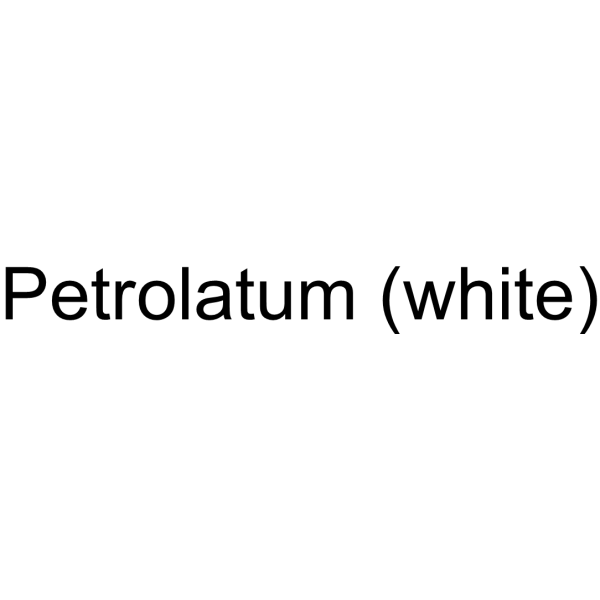Petrolatum

Petrolatum structure
|
Common Name | Petrolatum | ||
|---|---|---|---|---|
| CAS Number | 8009-03-8 | Molecular Weight | N/A | |
| Density | 0.84 | Boiling Point | 322 °C | |
| Molecular Formula | C86H142 | Melting Point | 70-80 °C ((ASTM D 127)) | |
| MSDS | Chinese USA | Flash Point | 198 °C | |
Use of PetrolatumPetrolatum (white) is an ointment vehicle for many drugs, due to its low skin irritation. Petrolatum (white) can be used as an excipient, such as ointment base, lubricant, adhesive, viscous agent, excipient. Pharmaceutical excipients, or pharmaceutical auxiliaries, refer to other chemical substances used in the pharmaceutical process other than pharmaceutical ingredients. Pharmaceutical excipients generally refer to inactive ingredients in pharmaceutical preparations, which can improve the stability, solubility and processability of pharmaceutical preparations. Pharmaceutical excipients also affect the absorption, distribution, metabolism, and elimination (ADME) processes of co-administered drugs[1][2]. |
| Name | Vaseline petroleum jelly |
|---|---|
| Synonym | More Synonyms |
| Description | Petrolatum (white) is an ointment vehicle for many drugs, due to its low skin irritation. Petrolatum (white) can be used as an excipient, such as ointment base, lubricant, adhesive, viscous agent, excipient. Pharmaceutical excipients, or pharmaceutical auxiliaries, refer to other chemical substances used in the pharmaceutical process other than pharmaceutical ingredients. Pharmaceutical excipients generally refer to inactive ingredients in pharmaceutical preparations, which can improve the stability, solubility and processability of pharmaceutical preparations. Pharmaceutical excipients also affect the absorption, distribution, metabolism, and elimination (ADME) processes of co-administered drugs[1][2]. |
|---|---|
| Related Catalog | |
| References |
| Density | 0.84 |
|---|---|
| Boiling Point | 322 °C |
| Melting Point | 70-80 °C ((ASTM D 127)) |
| Molecular Formula | C86H142 |
| Flash Point | 198 °C |
| Appearance of Characters | extra-low viscosity | white |
| Index of Refraction | n20/D 1.45 |
| Stability | Stable. Combustible. Incompatible with strong oxidizing agents. |
| Personal Protective Equipment | Eyeshields;Gloves;type N95 (US);type P1 (EN143) respirator filter |
|---|---|
| Hazard Codes | T |
| Risk Phrases | R45 |
| Safety Phrases | S53;S24/25 |
| RIDADR | NONH for all modes of transport |
| WGK Germany | 3 |
| RTECS | RV0350000 |
|
Comparative study of the efficacy and tolerability of a unique topical scar product vs white petrolatum following shave biopsies.
Journal. of. Drugs in. Dermatology. 12(1) , 86-90, (2013) An excess of 70 million cutaneous surgical procedures are conducted annually in the United States that may result in scarring. Skin scars are a normal outcome of the tissue repair process. However, in... |
|
|
Contact allergy to air-exposed geraniol: clinical observations and report of 14 cases.
Contact Dermatitis 67(1) , 20-7, (2012) The fragrance terpene geraniol forms sensitizing compounds via autoxidation and skin metabolism. Geranial and neral, the two isomers of citral, are the major haptens formed in both of these activation... |
|
|
Comparative evaluation of antimicrobial efficacy of various root canal filling materials along with aloevera used in primary teeth: a microbiological study.
J. Clin. Pediatr. Dent. 37(3) , 257-62, (2013) this study was conducted to evaluate the antimicrobial effectiveness of 6 root canal filling materials and a negative control agent against 18 strains of bacteria isolated from infected root canals of... |
| MFCD00147839 |
| EINECS 232-373-2 |

